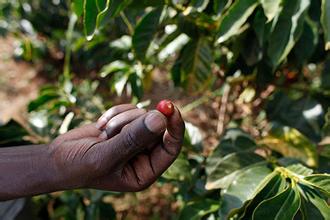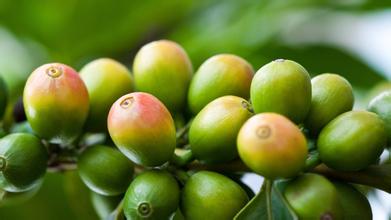Flavor description of Red Kaddura washed Coffee beans in Costa Rica introduction to the taste of grinding scale
Flavor description of Red Kaddura washed Coffee beans in Costa Rica introduction to the taste of grinding scale
There are many conditions for a good cup of coffee, some people like those with more acid, some people like those with higher alcohol thickness, and some people like those with higher sweetness. Everyone's understanding of "delicious" is different, but within the scope of my understanding, it is very important for me to have the comfort that resonates inside and the softness of the acid in the mouth. This is like a partner, whether I have a good sense of space is as important as whether I have a soft and open mind. Only with this kind of coffee will it be possible to reap her abundance and abundance after the entrance.
Other coffees worth mentioning are JuanVinas,PR, H.Tournon, Windmill,SHB, Montebello and SsntaRosa. Fine coffee is generally grown in Geredia and the central canyon. Another striking type of coffee is Sarchi (one of the five towns that represent Costa Rica's Coffee Road), which grows on the slopes of the PoasVolcano volcano, 53km from San Jose. Saatchi, founded in 1949, has a land area of 30770 hectares and grows sugar cane and coffee. The area is also famous for its handicrafts, attracting tourists from all over the world
Product name: red honey treatment of Fire Phoenix Manor in Costa Rica
Grade: SHB
Treatment: red honey
Variety: Kaddura, Kaduai
Cup test: high sweetness, clean and delicate, flower fragrance, fruit
Coffee was introduced into Costa Rica from Cuba in 1729. Today, its coffee industry is one of the well-organized industries in the world, with a yield of 1700 kg per hectare. Costa Rica has only 3.5 million people but 400m coffee trees, and coffee exports account for 25 per cent of the country's total exports. Costa Rica's volcanic soil is very fertile and well drained, especially in the central plateau CentralPlateau, where the soil consists of successive layers of ash and dust. Costa Rica was therefore the first country in Central America to grow coffee and bananas for commercial value. Coffee and bananas are the country's main exports.

Important Notice :
前街咖啡 FrontStreet Coffee has moved to new addredd:
FrontStreet Coffee Address: 315,Donghua East Road,GuangZhou
Tel:020 38364473
- Prev

Introduction to varieties of Ugandan Coffee produced by Flavor description, Grinding scale and Taste treatment
Dry aroma (1-5): 3.2 wet aroma (1-5): 3.4 acidity (brightness) (1-10): 8 taste (layer): 8.5 taste (alcohol thickness) (1-5): 4 aftertaste (residue) (1-10): 8.1 balance (1-5): 0 Base score (50): 50 total score (maximum)
- Next

The production process of geisha coffee beans from there-introduction to the origin and varieties of coffee beans
The production process of geisha coffee beans there-with an aura of invincibility and invincibility, the geisha of the Emerald Manor has become a fantasy product of the coffee industry, with the scent of flowers like fireworks, constantly blooming in the mouth in the process of drinking, with lemon, citrus, strawberry-like juice, making it like juice rather than coffee. Geisha coffee fan Jeff said, which one do you have?
Related
- Detailed explanation of Jadeite planting Land in Panamanian Jadeite Manor introduction to the grading system of Jadeite competitive bidding, Red bid, Green bid and Rose Summer
- Story of Coffee planting in Brenka region of Costa Rica Stonehenge Manor anaerobic heavy honey treatment of flavor mouth
- What's on the barrel of Blue Mountain Coffee beans?
- Can American coffee also pull flowers? How to use hot American style to pull out a good-looking pattern?
- Can you make a cold extract with coffee beans? What is the right proportion for cold-extracted coffee formula?
- Indonesian PWN Gold Mandrine Coffee Origin Features Flavor How to Chong? Mandolin coffee is American.
- A brief introduction to the flavor characteristics of Brazilian yellow bourbon coffee beans
- What is the effect of different water quality on the flavor of cold-extracted coffee? What kind of water is best for brewing coffee?
- Why do you think of Rose Summer whenever you mention Panamanian coffee?
- Introduction to the characteristics of authentic blue mountain coffee bean producing areas? What is the CIB Coffee Authority in Jamaica?

